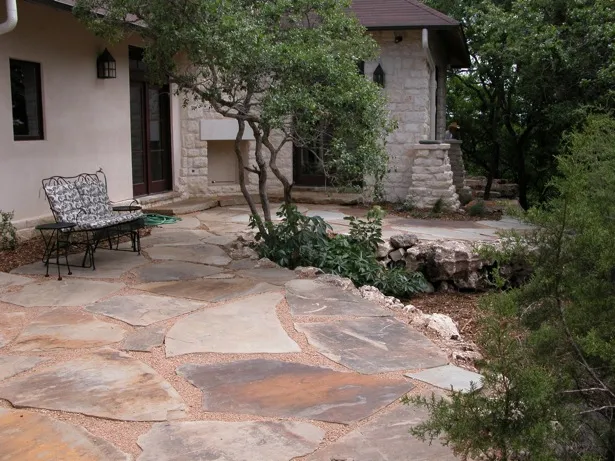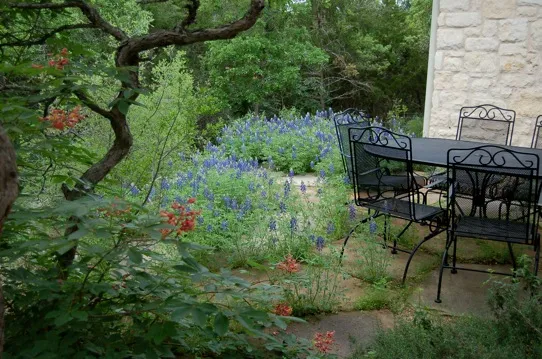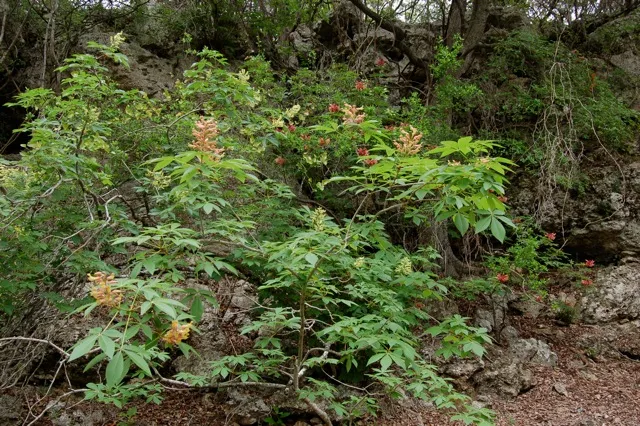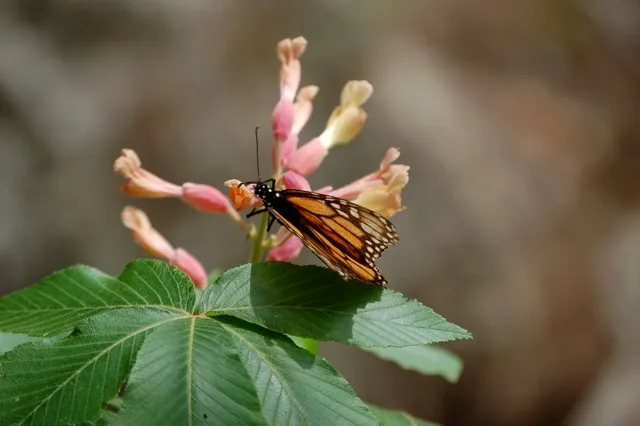By Delmar Cain

When we built our house in Boerne, we tried to keep our house footprint small and only cut those trees and shrubs that were absolutely in the way. But some of them returned, growing back from the roots that were not removed. That is how I became acquainted with red buckeye (Aesculus pavia var. pavia); also know as the scarlet buckeye, southern buckeye and firecracker plant.
By the time our back terrace was in place, I noticed sprouts without leaves were reaching 30 inches tall from the one-inch base of a plant that had been cut. It was located at the bases of three small shin oaks, which had been saved. Not knowing what the plant was I let it grow. It soon put out handsome green leaves in a palmate form, which means that each leaf was made up of five leaflets, attached to a central point to a stem. The leaves on long stems grew opposite each other on each side of the main trunk.

Then, still early in the spring each separate trunk also produced a large bud that eventually grew into a 6-inch flower cluster with individual flowers that were 1-1/12 inches long. The flowers were a bright red and I patted myself on the back for having allowed the bare sprouts to stay near the terrace. I soon was able to identify the plant as a red buckeye, which is classified as a small tree or shrub.
As the year progressed I began to notice that there were other buckeye trees on our lot and some had different colored flowers. Some of the trees had yellow flowers, some had pink flowers and some had even more scarlet flowers. A bit of research indicated that in our area in the Hill Country there is another variety of the buckeye (Aesculus pavia var. flavescens), which has yellow flowers. The Wildflower Center indicates that it is called the Texas yellow buckeye or the plateau pale buckeye. When the two varieties overlap in an area, hybridization can occur, with the product being plants with flowers in various combinations of red and yellow. The tree on our terrace may be a hybrid.
On a trip to East Texas I happened to be exploring a bit of property in Gregg County. I was very surprised, having grown up in East Texas, to find a red buckeye growing on a high bank of the Sabine River. I had never seen one in the area before. But I shouldn’t have been surprised since Aesculus pavia var. pavia has a range from Central Texas north to Illinois and east to Florida and up into Virginia. Aesculus pavia var. flavescens on the other hand is reportedly found in only a few counties in the Hill Country.

The red buckeye and the Texas yellow buckeye should be included in a list of plants that can be used in the flood plain along the creeks. We have a creek on our lot, which rises out of its banks when we get a rain of two or more inches. The buckeyes, which grow in the flood plain, have limber trunks and might loose their leaves, but they seldom break in the flood. They seem to serve much like buttonbush, which has a much deserved reputation for holding the soil.
As one of the first flowering plants of the spring, the buckeyes put out a welcome mat for hummingbirds, moving north in their annual migration. I happened to be at creek side early one spring when the buckeyes were blooming. I kept hearing an unmistakable hum and finally realized that the air was filled with hummingbirds, taking advantage of the blooms of the buckeyes, the only plants blooming.

This species of buckeye should not be confused with the Mexican buckeye (Ungnadia speciosa), which also grows in our area. The Mexican buckeye is in the Soapberry family, but the red buckeye is in the Horse-chestnut family. Both are early bloomers, but the leaves on the Mexican buckeye are similar to those of a pecan or walnut tree.
As always there is a downside to the red buckeye. It has early foliage and early blooms. But its response to hot dry weather is to drop its leaves. In these times of drought it can look like it is dead as early as July, without additional water. In the spring, even with little rain, it makes an early return to green.
Looking back, a careful homeowner would have inventoried the plants before cutting. We were lucky. As the saying goes, “Even a blind hog finds an acorn sometimes.” We found buckeyes.
